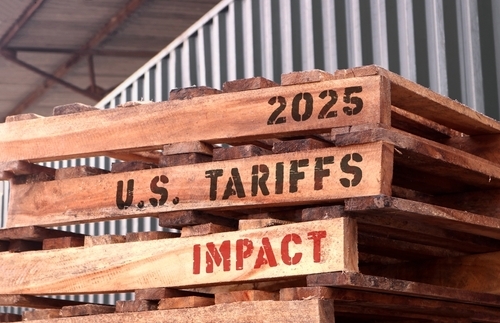A majority of retailers are absorbing at least some of their increased tariff costs. The NRF says that’s not the best move for the economy. Here’s why.
The tariff headlines continue to roll in, and retailers need to decide how they are going to handle the increase in costs of goods they import from overseas.
At 82%, the large majority of retailers say their businesses have been directly impacted by the tariffs implemented in 2025, according to a just-released Retail Systems Research survey of 100 U.S. retail executives. And many retailers have increased prices on at least a portion of their goods to absorb some of the increased tariffs:
- 61% of retailers say they plan to partially absorb some of the tariff costs.
- 23% say they will be forced to pass on all associated increased costs on to consumers.
- 9% say they plan to absorb all costs no matter what.
- 7% say they anticipate the need to pass costs on to customer will only increase with the length of a trade war.
Mark Mathews, National Retail Federation’s chief economist, however, argued that absorbing tariffs will hurt the U.S. economy in the long run.
“The outcomes for the economy are significantly worse the more businesses eat tariffs,” Mathews said in the NRF’s annual back-to-school webinar in July.
This is largely because in order to eat the cost, merchants are making cuts in other places, including wadges and employment. “All those things that keep our economy motoring along,” he said.
In RSR’s retailer survey, a majority of retailers agreed that staff reductions will be necessary in a tariff environment.
How retailers adjust to tariffs beyond pricing
Beyond raising prices and reducing labor, brands have a number of levers to pull to adjust to the recent policy changes. A Salesforce survey of 5,000 global consumer goods leaders cited the below tactics their companies are using or plan to use in response to the macroeconomy policy shifts:
- 42% — Adjust sourcing strategy
- 41% — Negotiate with suppliers and/or retailers
- 38% — Delay capital investments or expansion plans
- 37% — Absorb additional costs internally
- 35% — Relocate manufacturing or operations to more favorable locations
- 35% — Build up inventory as a precaution
- 35% — Reformulate, redesign or repackage products
- 26% — Pass on costs to consumers
- 1% — We are not making any changes.
For merchants that have raised prices, most are letting shoppers know on their website, next to price information, according to RSR’s study:
- 49% — On website next to price information
- 37% — Advertisement and other marketing tools
- 37% — On in-store price tags
- 35% — Social media
- 34% — In-store signage
- 33% — As a written announcement on our website
- 9% — We plan to keep this information private
- 4% — N/A
Read more about how brands — including Fat Brain Toys, E.l.f., Topdrawer, Schmidt Brothers Cutlery, Swingline Staplers and The Honest Kitchen — are communicating tariff-driven price increases to shoppers in this article.



